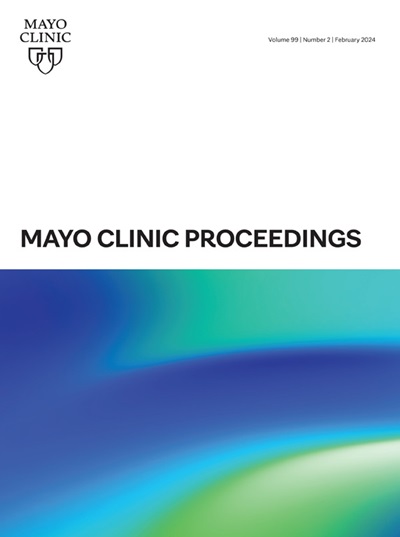Association Between Body Mass Index and Age at End-Stage Renal Disease in Patients With Autosomal Dominant Polycystic Kidney Disease in the United States and Japan
IF 6.7
2区 医学
Q1 MEDICINE, GENERAL & INTERNAL
引用次数: 0
Abstract
Objective
To evaluate the association between body mass index (BMI) and age at initiation of renal replacement therapy (RRT) of patients with autosomal dominant polycystic kidney disease (ADPKD) in the United States and Japan, 2 populations with different dietary habits and BMIs.
Methods
We performed a cross-sectional analysis using data from the United States Renal Data System (USRDS) and the Japanese Society for Dialysis Therapy Renal Data Registry (JRDR) to compare age, BMI, and other clinical characteristics of the patients who initiated RRT in the 2 countries between January 1, 2006, and December 31, 2007.
Results
This study included 3556 patients (1877 men and 1679 women) with RRT from the USRDS (n=2491) and JRDR (n=1065). Mean ages at RRT were 56.6±13.1 years in the United States and 61.6±12.5 years in Japan (P<.001). The BMI was 28.2±7.1 kg/m2 in the USRDS and 22.0±3.3 kg/m2 in the JRDR (P<.001). Japanese participants were the oldest, followed in descending order by Asian Americans, White Americans, and African Americans. Japanese participants had the lowest BMI, followed in ascending order by Asian Americans, White Americans, and African Americans. Univariable and adjusted analyses found that BMI was significantly and inversely associated with age at RRT, both overall and separately in American and Japanese populations.
Conclusion
Lower BMI is significantly associated with older age at RRT in patients with ADPKD in both the United States and Japan. Japanese individuals had lower BMI and were older than US people of various ethnicities. Lower BMI in Japan is likely to be associated with a slower progression of ADPKD.
美国和日本常染色体显性多囊肾病终末期肾病患者体重指数与年龄的关系
目的:评价美国和日本两种不同饮食习惯和BMI的常染色体显性多囊肾病(ADPKD)患者体重指数(BMI)与肾替代治疗(RRT)起始年龄的相关性。方法:我们使用来自美国肾脏数据系统(USRDS)和日本透析治疗协会肾脏数据登记处(JRDR)的数据进行横断面分析,比较2006年1月1日至2007年12月31日在这两个国家进行RRT的患者的年龄、BMI和其他临床特征。结果:本研究纳入3556例患者(男性1877例,女性1679例),RRT来自USRDS (n=2491)和JRDR (n=1065)。美国和日本的平均RRT年龄分别为56.6±13.1岁和61.6±12.5岁(USRDS为P2, JRDR为22.0±3.3 kg/m2)。结论:美国和日本的ADPKD患者的低BMI与RRT年龄显著相关。日本人的身体质量指数较低,年龄也比不同种族的美国人要大。在日本,较低的BMI可能与ADPKD进展较慢有关。
本文章由计算机程序翻译,如有差异,请以英文原文为准。
求助全文
约1分钟内获得全文
求助全文
来源期刊

Mayo Clinic proceedings
医学-医学:内科
CiteScore
16.80
自引率
1.10%
发文量
383
审稿时长
37 days
期刊介绍:
Mayo Clinic Proceedings is a premier peer-reviewed clinical journal in general medicine. Sponsored by Mayo Clinic, it is one of the most widely read and highly cited scientific publications for physicians. Since 1926, Mayo Clinic Proceedings has continuously published articles that focus on clinical medicine and support the professional and educational needs of its readers. The journal welcomes submissions from authors worldwide and includes Nobel-prize-winning research in its content. With an Impact Factor of 8.9, Mayo Clinic Proceedings is ranked #20 out of 167 journals in the Medicine, General and Internal category, placing it in the top 12% of these journals. It invites manuscripts on clinical and laboratory medicine, health care policy and economics, medical education and ethics, and related topics.
 求助内容:
求助内容: 应助结果提醒方式:
应助结果提醒方式:


